SHEEHAN GALLERY

On

BOOTH
HENRY STREET SETTLEMENT
FOR
INFORMATION:
BENEFIT
NOVEMBER 3RD - 6TH, 2022
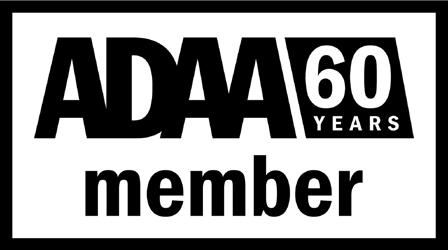
TO PURCHASE TICKETS:
BENEFIT PREVIEW BY INVITATION NOVEMBER 2ND LOCATION: PARK AVENUE ARMORY PARK AVENUE AT 67TH STREET NEW YORK FOR SHOW INFORMATION:
SUSAN SHEEHAN GALLERY
East 16th Street New York, NY
David Hockney Red Celia, 1984

Lithograph
Sheet size: 30 x 21
Printer and Publisher: Tyler Graphics, Ltd., Bedford, New York
Edition: 82, plus proofs
Catalogue Raisonné: MCAT 267
Signed, numbered, and dated
David Hockney
Celia with Green Hat, 1984

Lithograph
Sheet size: 29 1/2
Printer and Publisher: Tyler Graphics, Ltd., Bedford, New York
Edition: 98, plus proofs
Catalogue Raisonné: MCAT 268
Signed, numbered, and dated
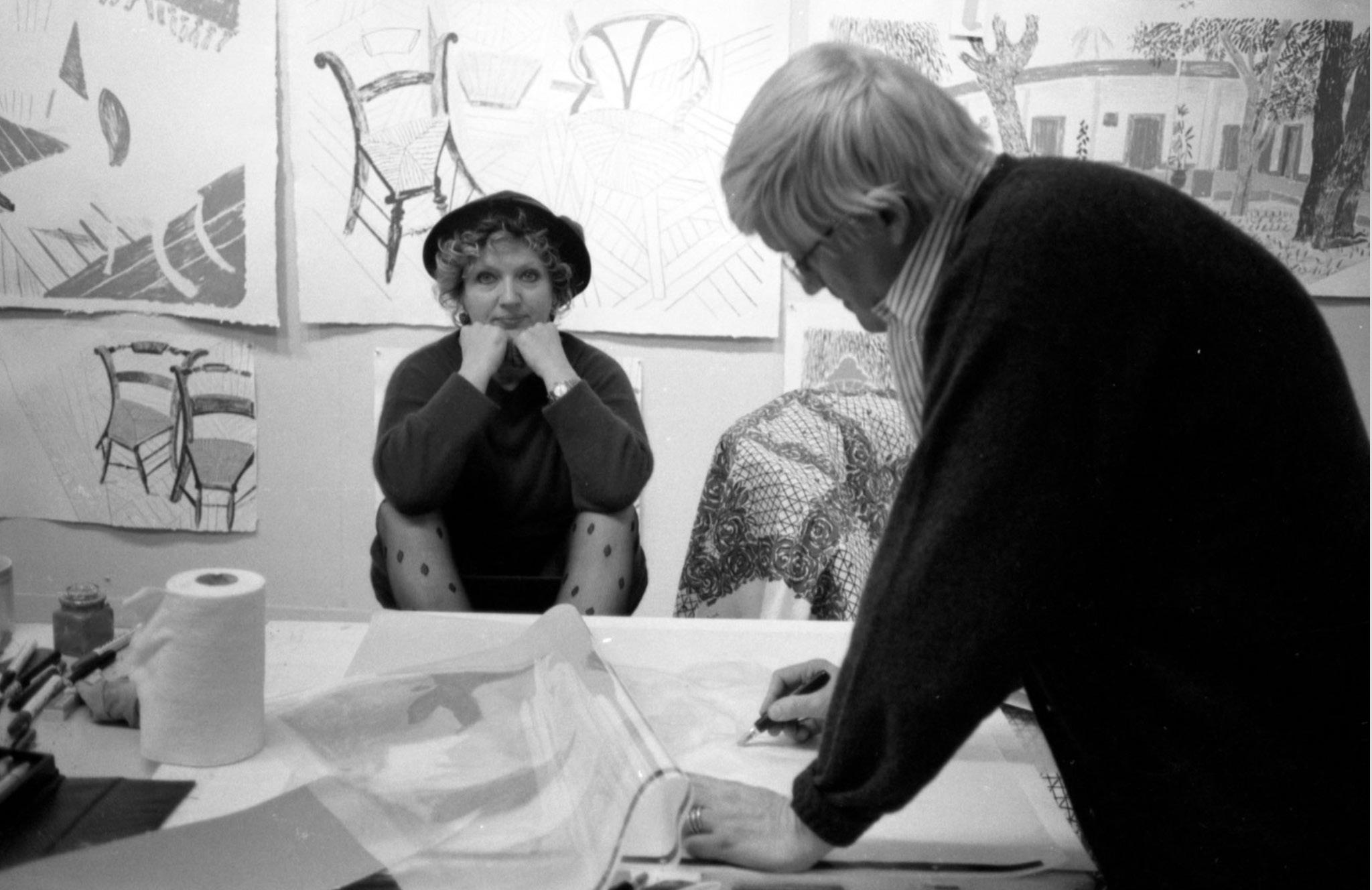 Celia Birtwell posing for David Hockney, 1984
Celia Birtwell posing for David Hockney, 1984
David Hockney’s (b.1937) works are often characterized by an unassuming realism that partially stems from his interest in photography. Over the course of his long career he has mastered a variety of mediums, but his devotion to printmaking has been unwavering. Hockney often favored the print making technique of lithography because it could be used like drawing and was an extension of his crayon, charcoal, and brush works on paper. At the time this print was made, Hockney began using a new lithographic technique as he wanted to make the portraits more spontaneous and fluid by draw ing boldly with a brush in diluted lithographic ink tusche.
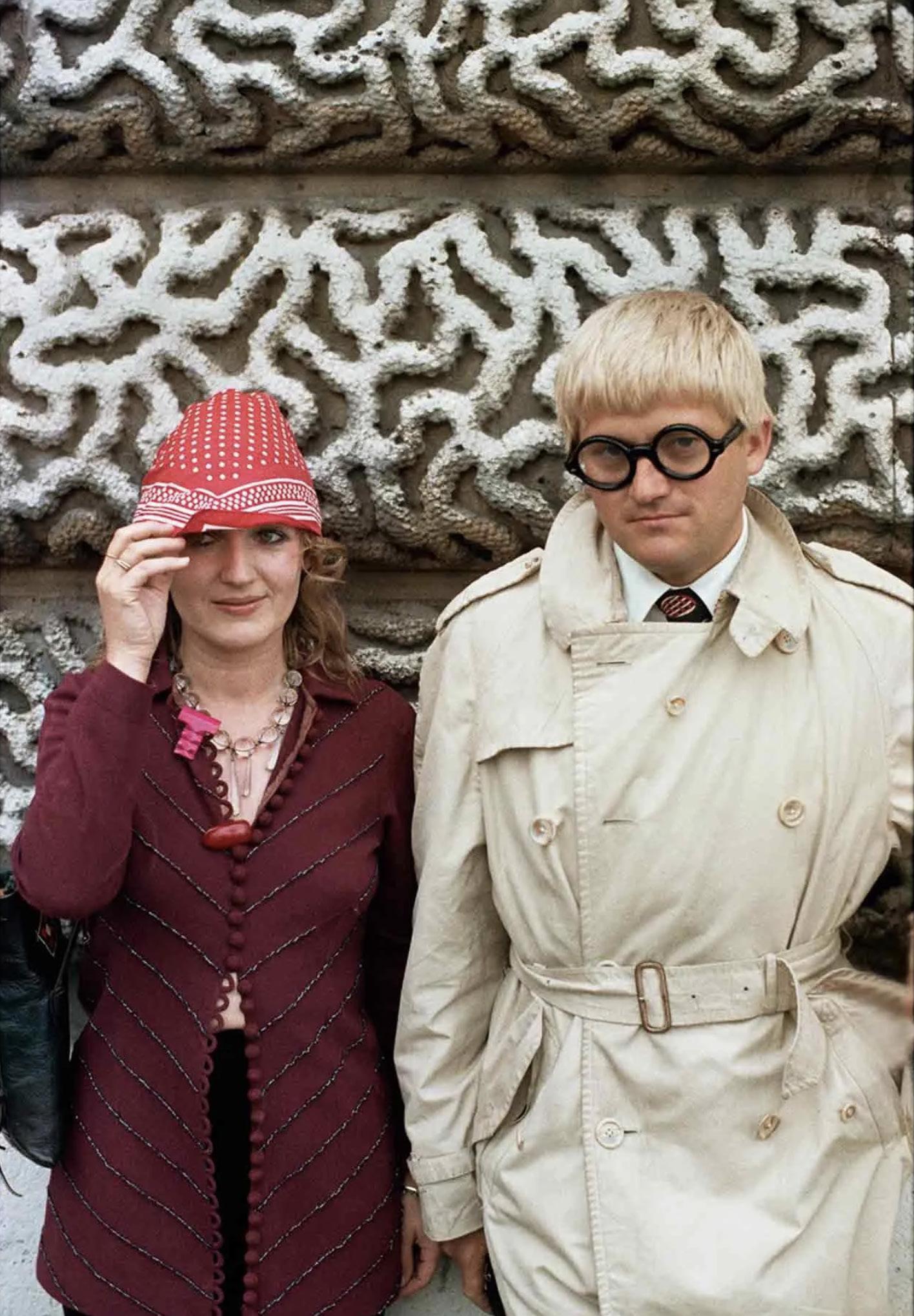
In the works Red Celia and Celia with a Green Hat from the “Moving Focus” series, Hockney cap tures his friend and beloved muse Celia Birtwell. She is caught in elegant poses inspired by the prints of Matisse, whose command of form and line appealed to the artist. In lithographic crayon, he subtly outlines her physical features.
Celia was a London textile designer and an icon of the Swinging Sixties. Hockney became good friends with her in the late 1960s when she married the prominent fashion designer Ossie Clark, an old friend of Hockney’s. Even though the unconventional marriage did not last, Celia remained one of Hockney’s favorite models and an anomaly in Hockney’s male-dominated imagery. As Hockney explained,“Celia has a beautiful face, a very rare face with lots of things in it which appeal to me. It shows aspects of her, like her intuitive knowledge and her kindness, which I think is the greatest virtue. To me she’s such a special person.” Hockney has a keen observation of the way in which personality is conveyed through the body as much as through facial expression, and perhaps it is his portrayals of Celia’s flair and grace that attracts the greatest appreciation.
David Hockney
Four Part Splinge, 1993
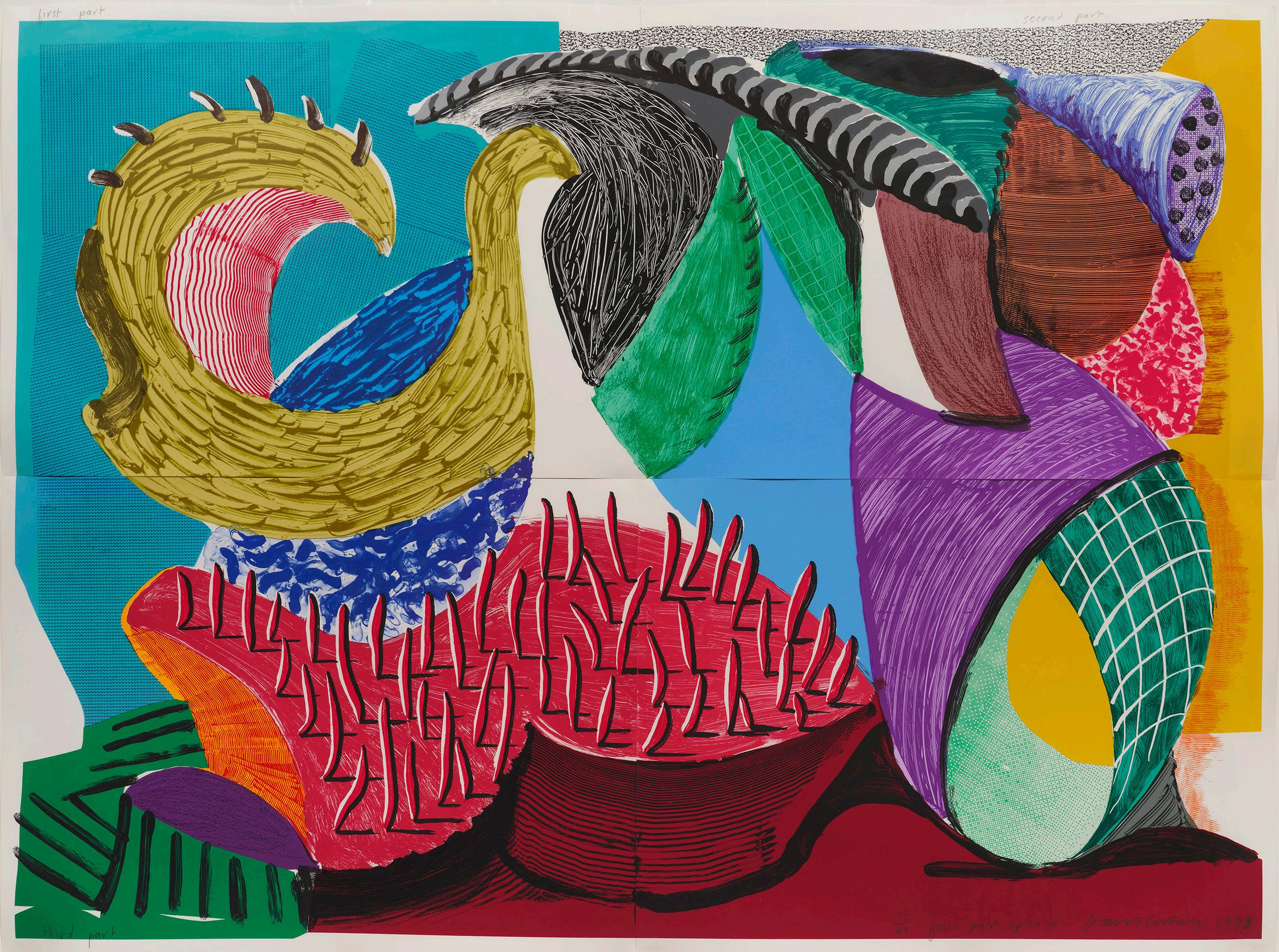
Lithograph and screenprint
Sheet size: 49
Printer and Publisher: Gemini G.E.L., Los
Edition: 48,
Catalogue Raisonné: MCAT
Signed, numbered,
Edward Hopper
American Landscape, 1920

Etching
Sheet size: 13 x 17 1/2 inches
Printer: The Artist
Edition: Approximately 50, from an intended edition of 100
Catalogue Raisonné: Levin 69
Signed
Provenance:
DeMoines Art Center, Iowa
Henry G. Harmon, President of Drake University Private Collection, Iowa
Edward Hopper Night Shadows, 1921
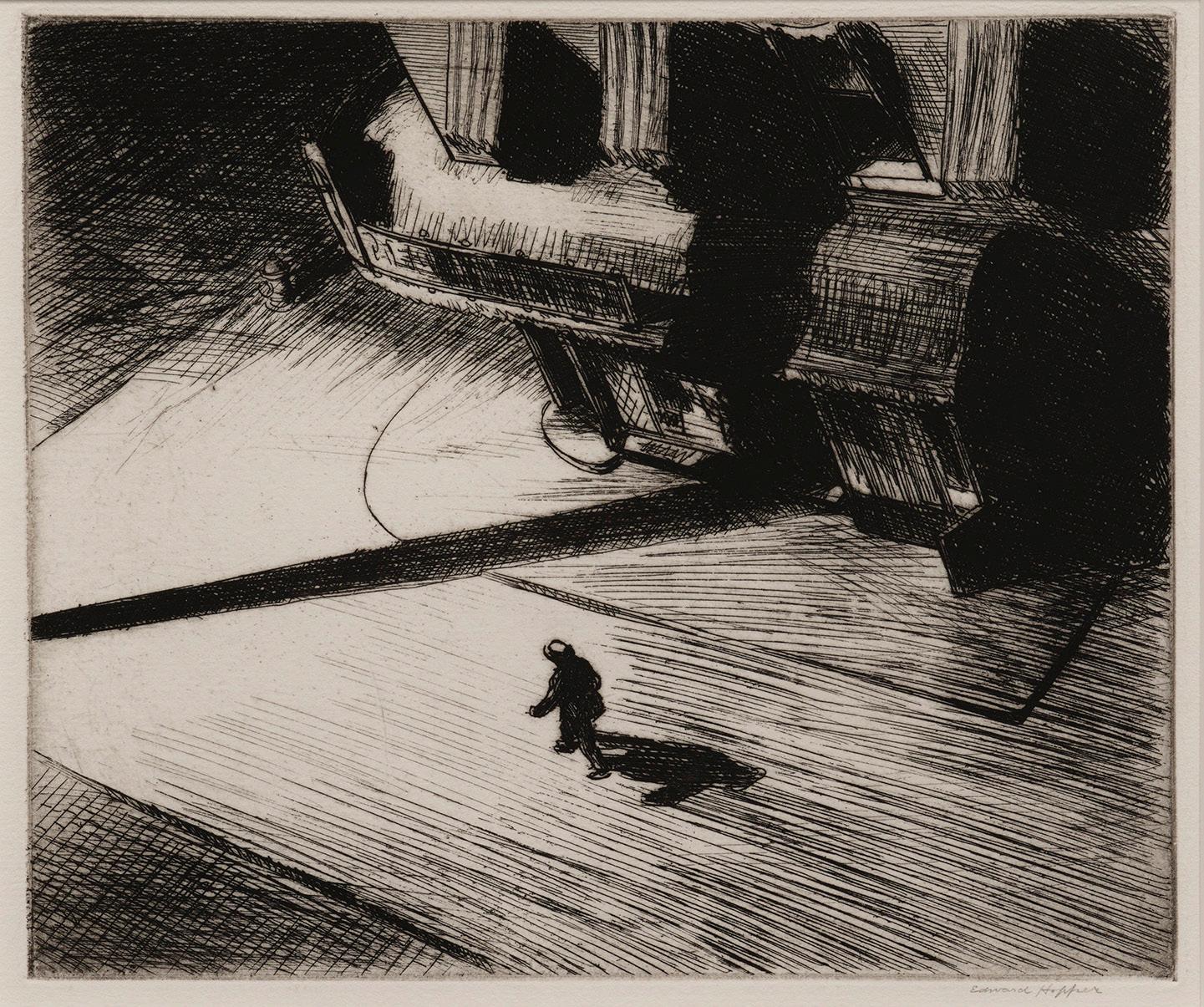
Etching
Sheet size: 12 x 14 1/2 inches
Printer: The Artist
Edition: Approximately 75 impressions, from an intended edition of 100
Catalogue Raisonné: Levin 82
Signed and inscribed “Night Shadows $30,” by the artist
A very rare impression before the plate was steel-faced
Provenance: DeMoines Art Center, Iowa
Private Collection, Iowa
Despite his reputation as a realist painter, Edward Hopper (1882–1967) initially struggled to find a market for his canvases, achieving his first success as an artist in New York by creating prints. Upon learning etching in 1915, Hopper quickly realized that the technique suited his style well, enabling him to achieve clear lines and stark contrasts between areas of light and shadow. He often height ened this effect by using bright white papers and specially ordered inks.
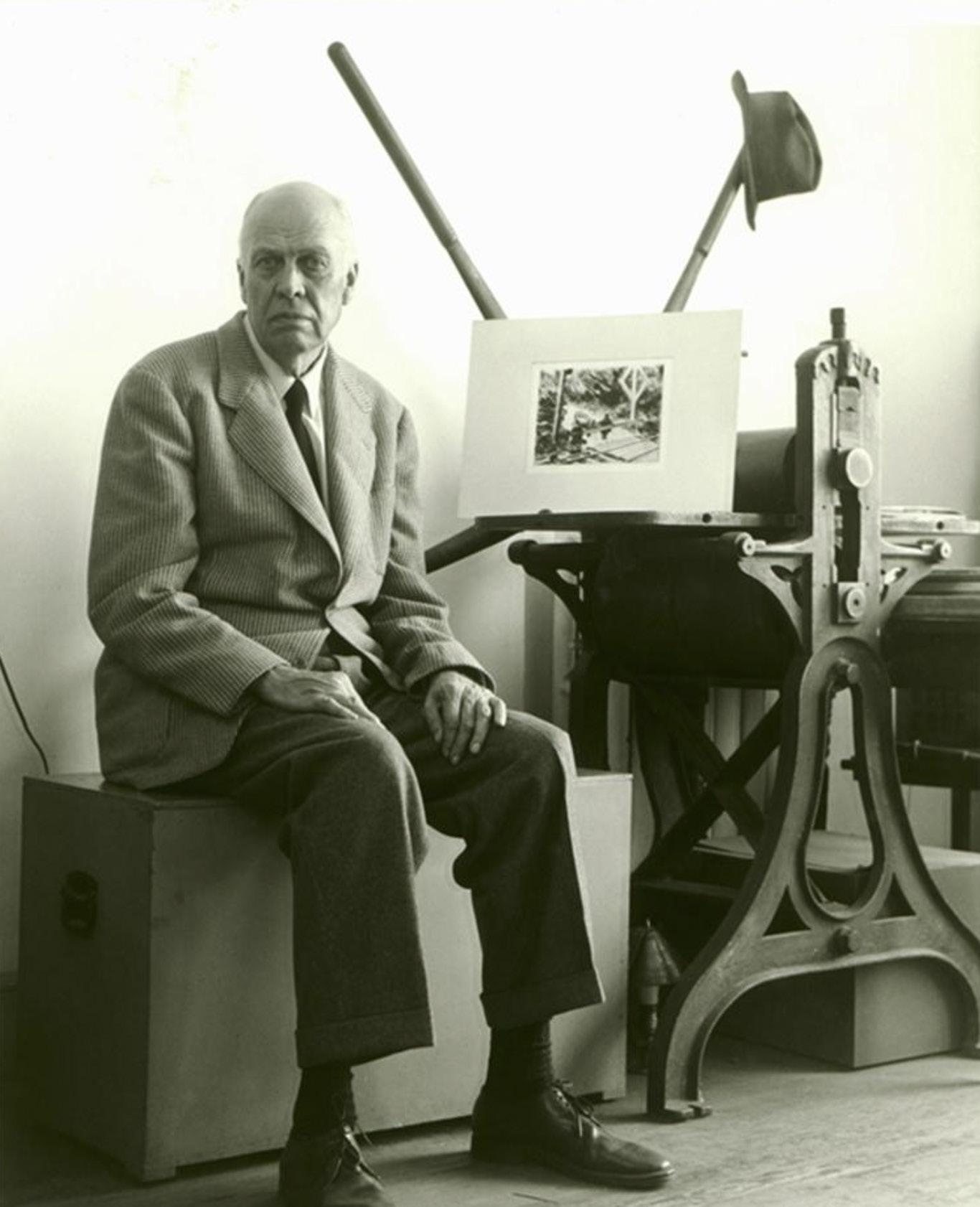
Hopper’s prints from the generative decade that followed show his early exploration of the motifs he would later become famous for rendering in paint, always portraying everyday American life with quiet yet intense drama. American Landscape features one of Hopper’s quintessential sub jects: industrial railroad tracks cutting through an otherwise peaceful pastoral landscape. The jux taposition would be forlorn were it not for Hopper’s depiction of several sauntering cows viewed from behind, their haunches rendering the image tongue-in-cheek. Looking at this print, one can almost feel a country breeze passing, carrying with it the sound of a far-off train—a quiet yet portentous blend of past and present, familiar and unknown. Both the content and atmosphere of American Landscape foreshadows some of Hopper’s most famous paintings, including House by a Railroad (1925).
A year later, Hopper created Night Shadows, his best-known etching and one of his most iconic works in any medium. The print depicts a lone man on a deserted city street as seen from a birdseye view. Although its content is not overtly sinister, the scene feels ominous thanks to Hopper’s extreme foreshortening coupled with his expert use of cross-hatching and deeply bitten lines to create dark, mysterious shadows. As with most of Hopper’s most renowned works, the viewer of Night Shadows occupies the role of voyeur, observing the lone stranger from somewhere out of his view. Dwarfed by and seemingly vulnerable to his surroundings—which were inspired by an actual location in New York, also seen in his painting New York Corner (1913)—the figure in Night Shadows captivates us as we wonder where he has come from and where he is headed.
Night Shadows is not only an iconic image, but the exhibited impression is an exceedingly rare one printed by the artist before the metal printing plate was reinforced with steel-facing when Peter Platt printed a larger edition. Obsessed with quality, Hopper printed most of his etchings himself in his West Village studio in very small quantities. The later and larger edition of this image was printed in an edition of less than 500 and offered to readers of The New Republic magazine as an incentive to subscribe. Hopper produced approximately 70 etchings between 1915 and 1928 before returning exclusively to painting. However, he attributed his printmaking practice to the evolution and ultimate success of his painting practice, stating later in life: “After I took up my etching, my painting seemed to crystallize.”
Edward Hopper with his etching press in his New York studio, 1967Wayne Thiebaud

Apples, 1987
Woodcut
Sheet
Printer:
Publisher:
Edition:
Signed,
“I remember when I was a boy how great it was to get ahold of my mothers lipstick to draw with, lipstick is so soft, we don’t have any pencils that are equally sensitive.”
-Wayne Thiebaud
Wayne Thiebaud
Lipsticks - Black, 1988
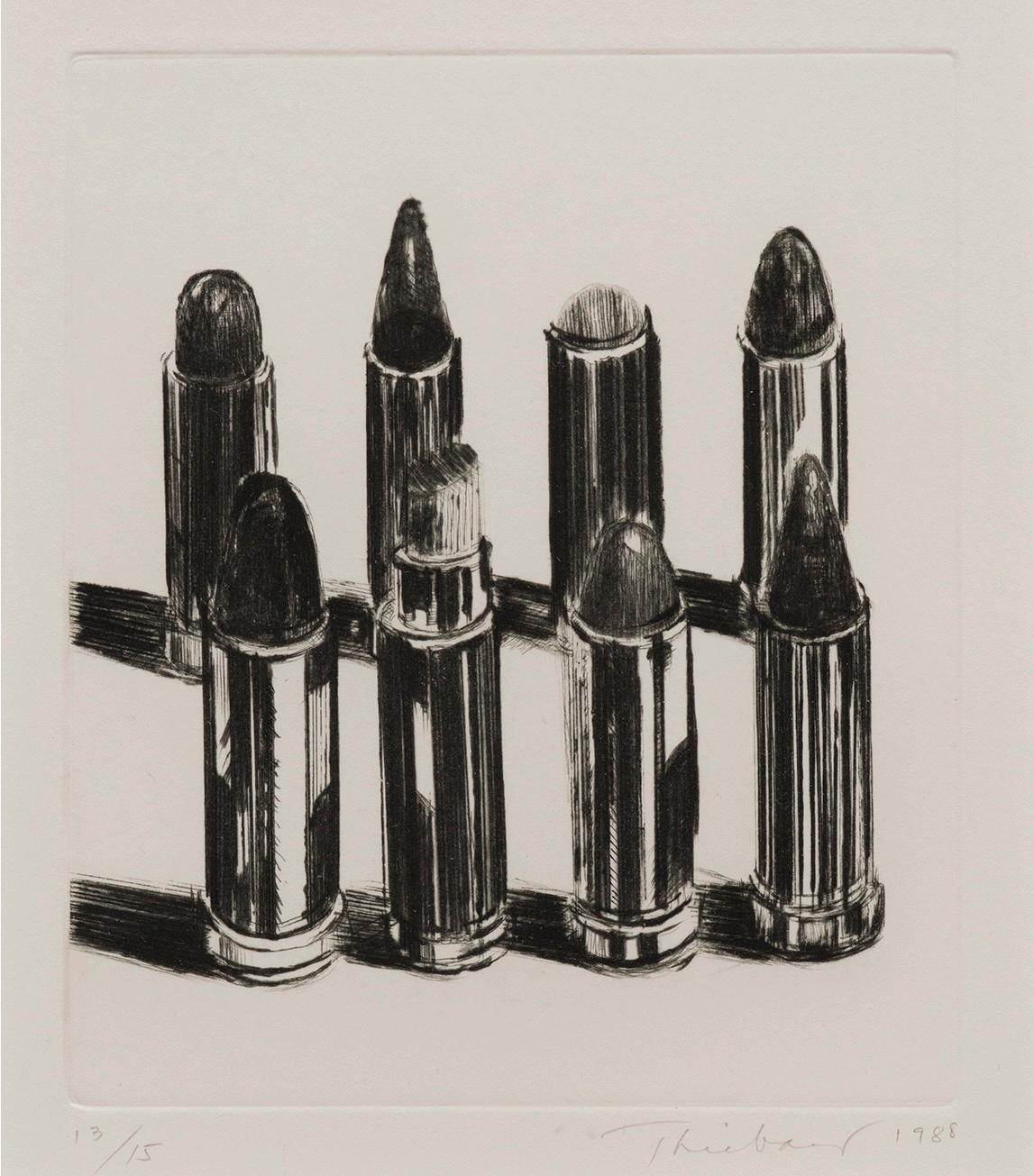
Drypoint
Sheet size: 14 x 12 inches
Printer and Publisher: Crown Point Press, San Francisco Edition: 15, plus proofs
Signed, dated, and numbered
Wayne Thiebaud (1920-2021) is best known for his vibrant paintings and prints of cityscapes and familiar objects said to represent his vision of everyday American life. Rather than offering a satirical look at popular American culture like many of his Pop art contemporaries, Thiebaud’s still lifes depict confections and household objects with an earnest frankness.
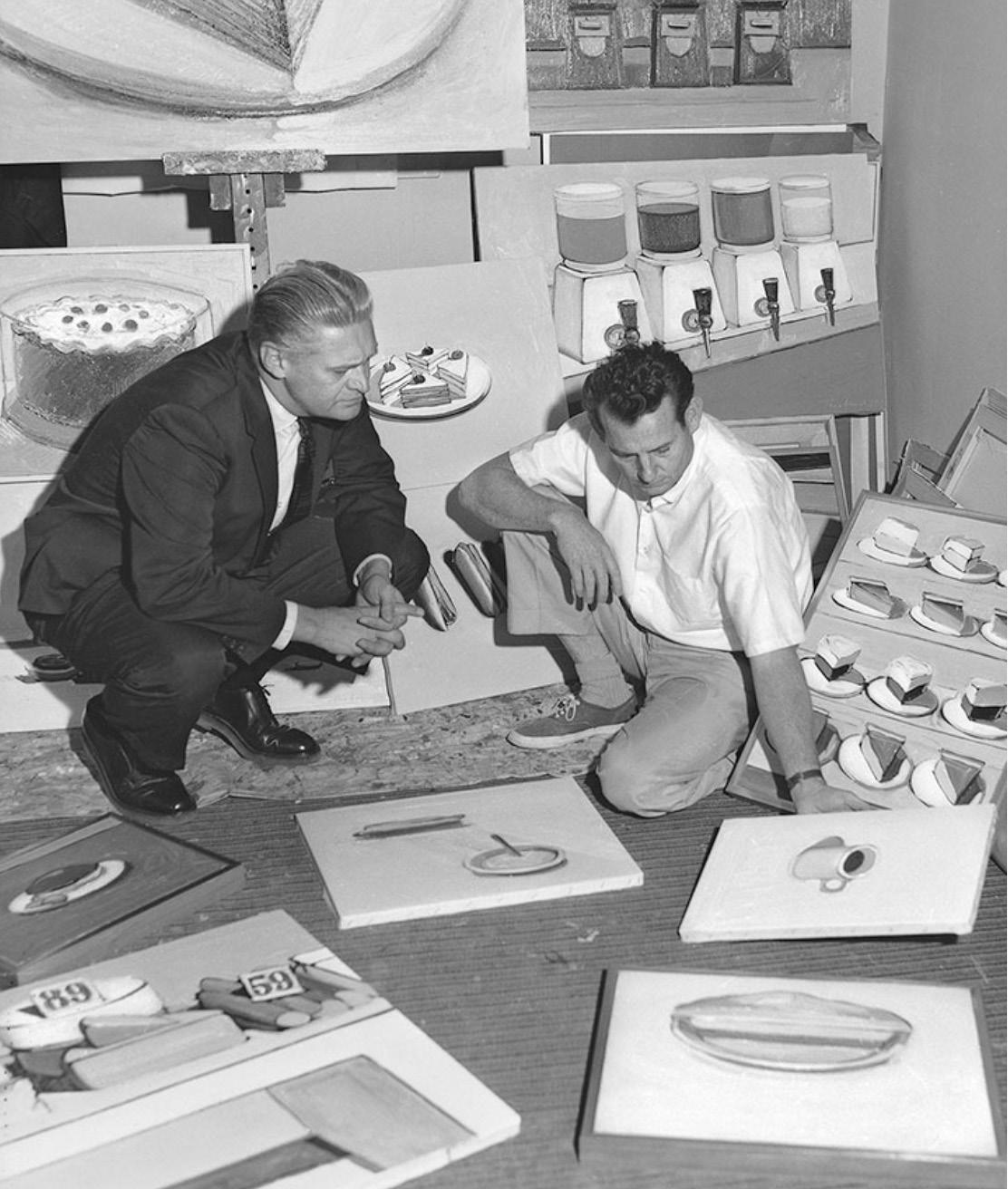
Thiebaud created his first prints in the 1950s. He immediately gravitated to the printing medium as a way to experiment with subjects he had already rendered colorfully in paint. Thiebaud once re marked that, “Since printmaking is a sequential process, you’re of necessity slowed down to really intersperse with some sort of critical interrogations possible.” Thiebaud had been drawing and paint ing lipstick since he first worked as a commercial illustrator in the late 1940s, where he often created makeup ads.
The orderly arrangement of tubes in Lipsticks - Black alludes to Thiebaud’s paintings and prints of rows of confections. The stylized still life emblematizes his ethos of “[making] some drama, even though you’re working with very ordinary subject matter.” The dramatic shadows in Lipsticks - Black conjure images of brightly lit department store displays. They also reveal Thiebaud’s sensitivity to light, a common feature of his prints of still lifes.
Thiebaud has created many prints and paintings of lipsticks at various scales, but always with specific attention paid to the shiny tube exteriors. The size and material of the tube has been said to evoke bullet casings, giving these otherwise familiar, feminine objects a threatening quality. Regardless of this sinister subtext, the sharp forms that Thiebaud achieves in Lipsticks - Black exemplify his em brace of “the surprises where you learn from printmaking.”
Professor Paul Beckman with Wayne Thiebaud in his Sacramento, California studio, 1962-63Wayne Thiebaud
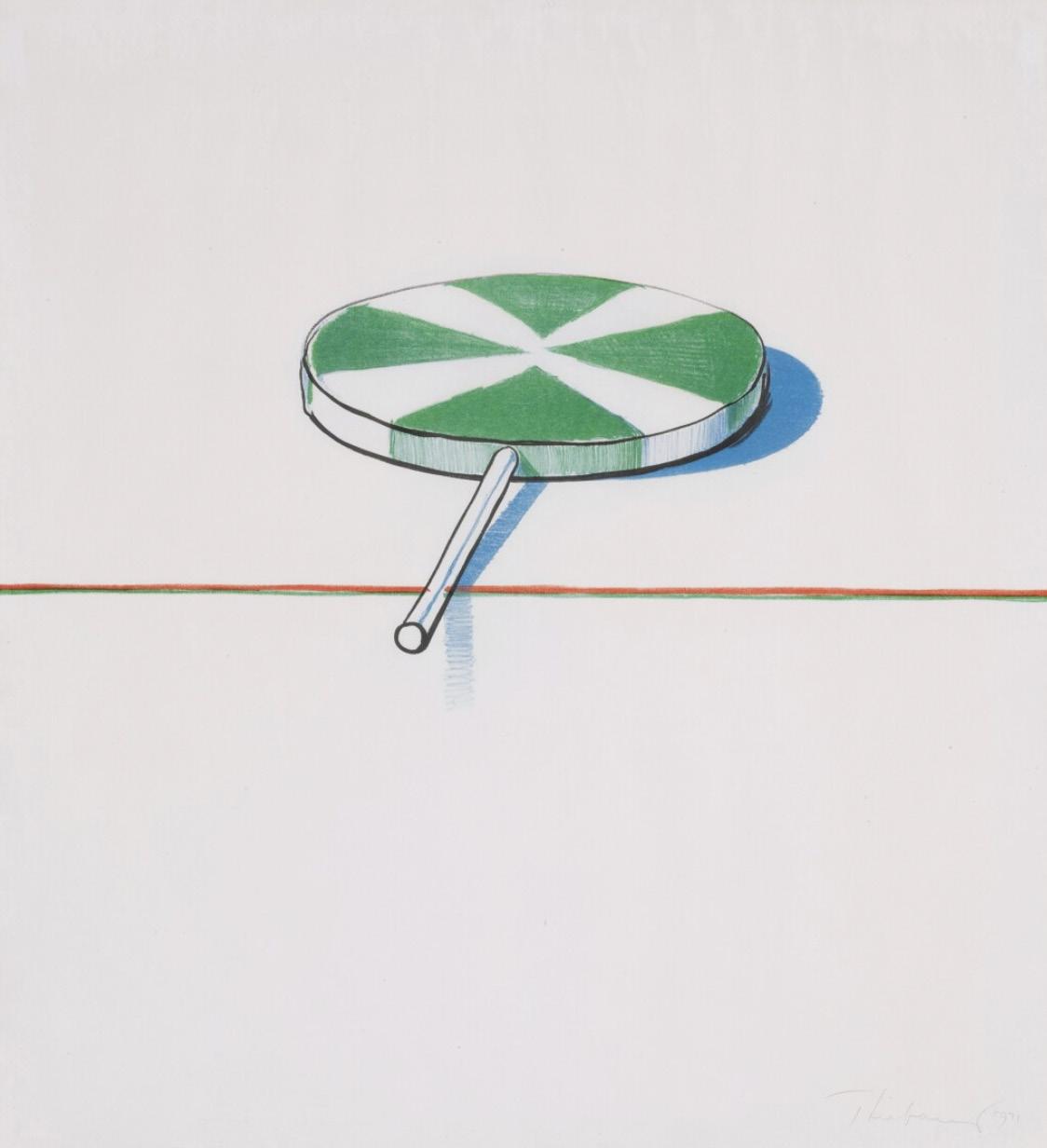
Large Sucker, 1970
Lithograph
Sheet size: 24 x 22 inches
Printer: Chiron Press, New York
Publisher: Parasol Press Ltd., New York
Edition size: 50, plus proofs
Signed, numbered, and dated
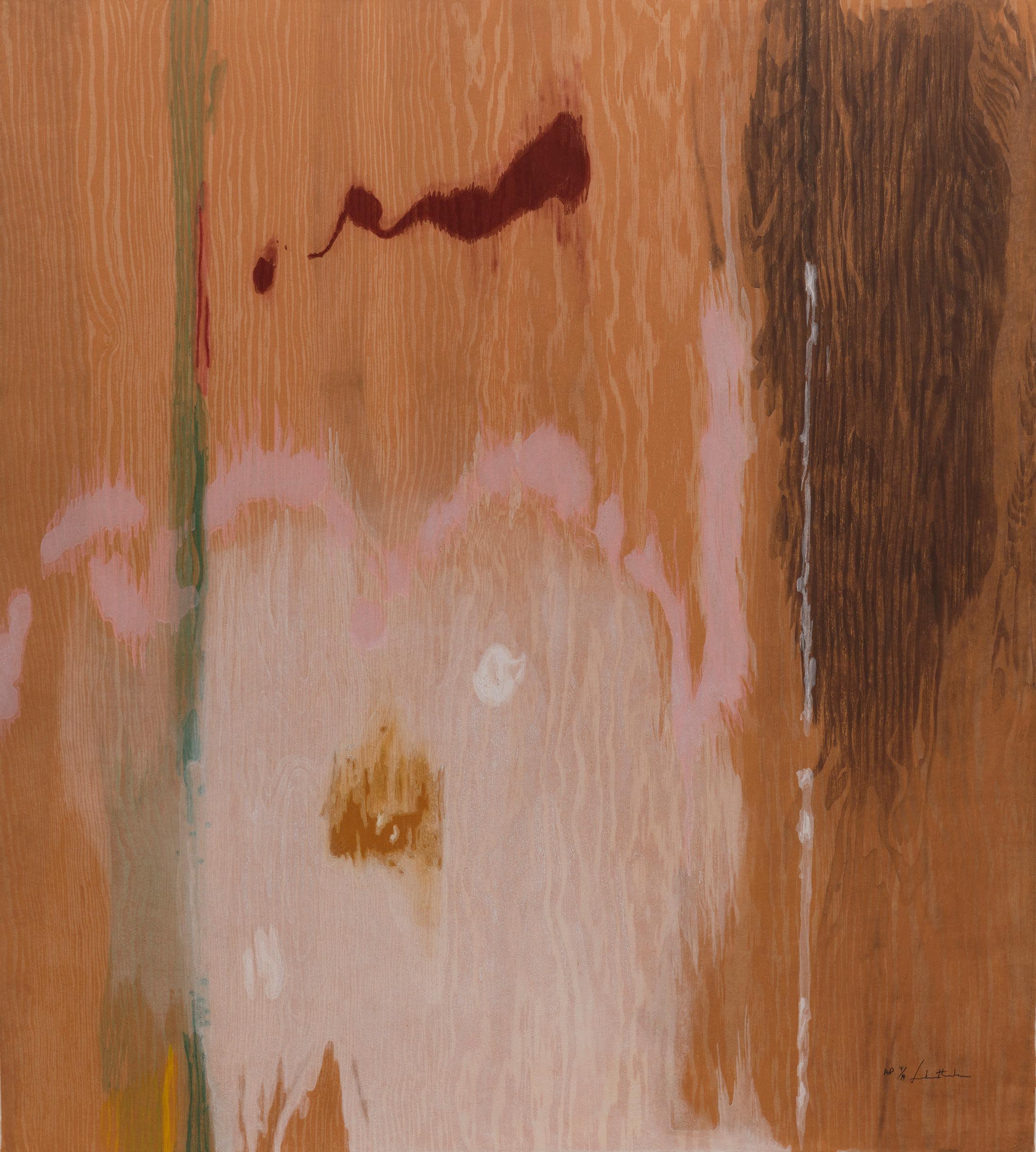
Helen Frankenthaler (1928-2011) became active in the New York School of the 1950s, initially influ enced by artists like Arshile Gorky, Willem de Kooning, and Jackson Pollock. She gained fame with her invention of the color-stain technique—applying thin washes of paint to unprimed canvas—in her iconic Mountains and Sea (1952), a motivating work for Morris Louis, Kenneth Noland, and other Color Field painters who emerged in the 1960s.
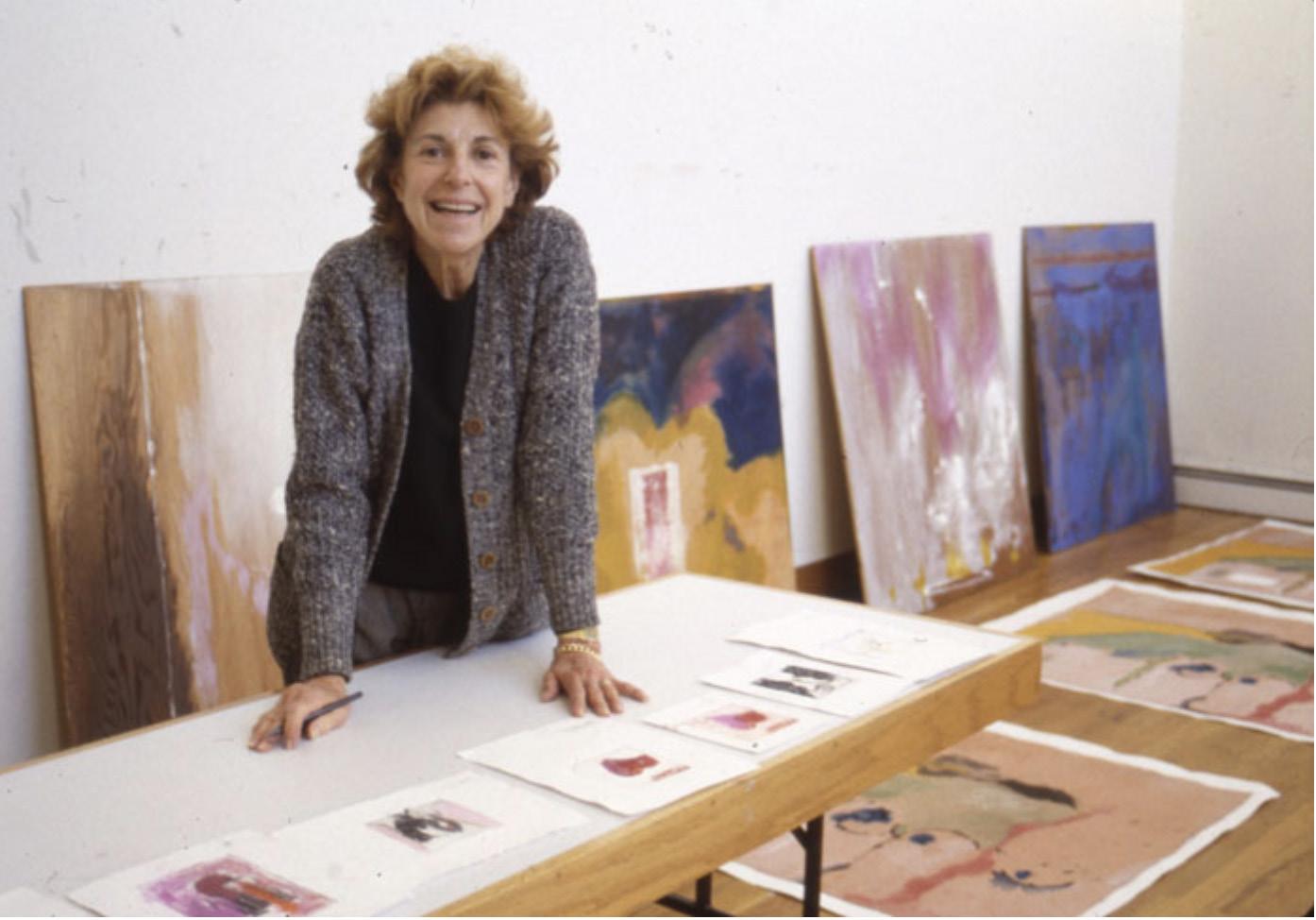
Her own canvases, however, often evoked elements of landscape or figuration in the shaping of their forms. “My pictures are full of climates, abstract climates,” she once said. “They’re not nature per se, but a feeling.” As poet and critic Frank O’Hara wrote in 1960, “she is willing to risk every thing on inspiration.” In addition to painting, Frankenthaler also made ceramics, welded steel sculp tures, and set designs, but the related medium that most attracted her, and in which her achieve ment came the closest to painting, was printmaking—especially the creation of woodcuts, hers counting among the greatest of contemporary works in that medium.
Master Printer Kenneth Tyler recalled that with the Tales of Genji, a series of six woodcut prints that Frankenthaler began in 1995, “It was apparent from the beginning that what was needed was a new approach and technique for making what Helen strove for: a woodcut with painterly resonance.” Tyler suggested to Frankenthaler that she communicate what she wanted to the workshop printers by painting onto six pieces of wood.
Yasuyuki Shibata, a Japanese carver trained in the traditional technique of ukiyo-e, was employed to carve woodblocks after the six paintings that Frankenthaler produced. Handmade paper was also skillfully created to resemble the wood grain look and texture of the original paintings. In order to transpose the lush, transparent washes of color that Frankenthaler had painted into print, the techni cians at Tyler Graphics had to work fast, with wet sheets of paper and inks that were forced to bleed and blend into one another. It was only through trial and error that the workshop gradually over came these technical challenges.
Despite a leap into the creative unknown, the six resulting images are extraordinary prints. The Tales of Genji, which took the artist and the workshop three years to complete, is perhaps the greatest achievement in experimental print collaboration between Frankenthaler and Tyler.
Helen Frankenthaler with proofs for the Tales of Genji series at Tyler Graphics, 1995 Helen Frankenthaler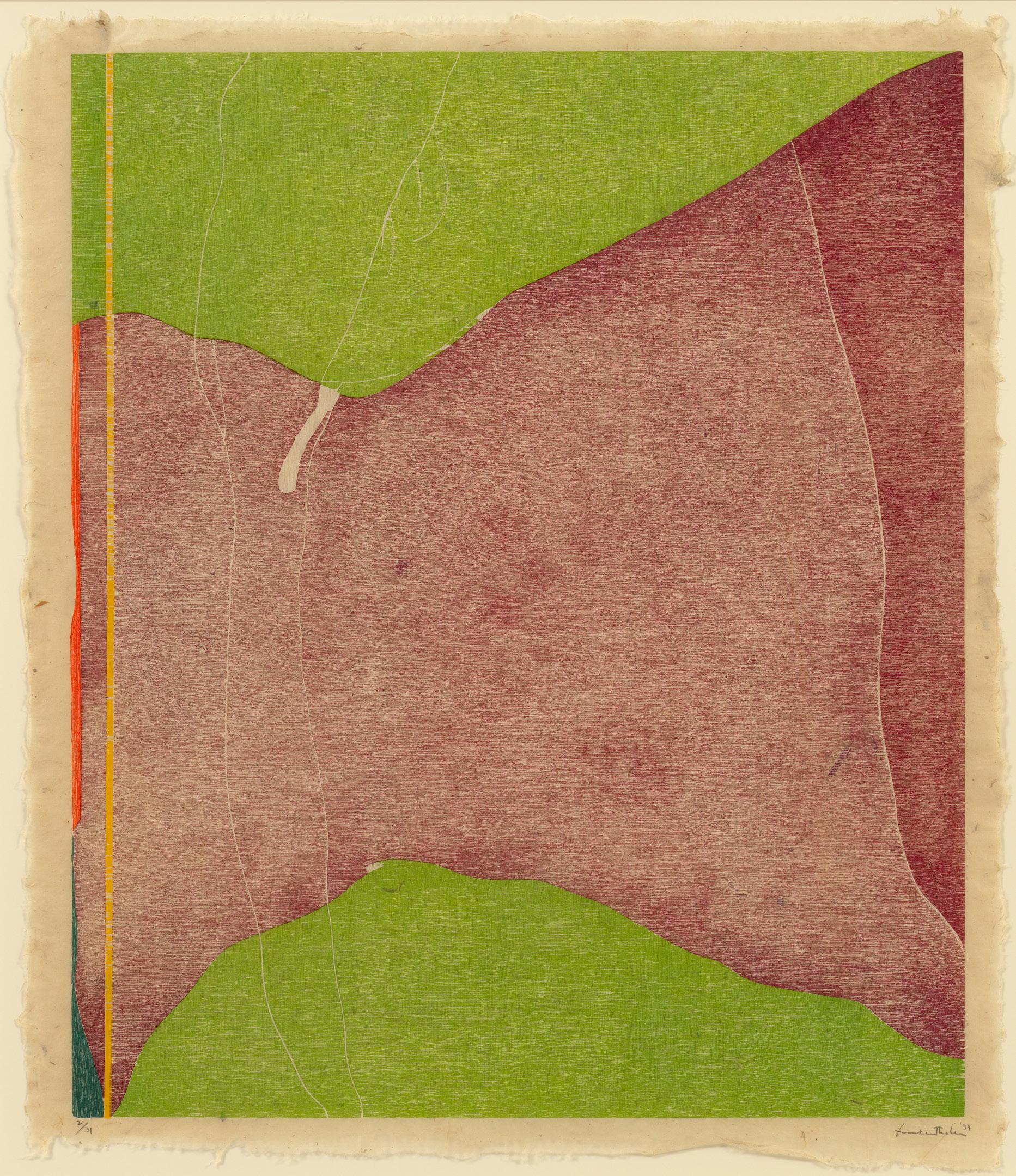
Sheet
Printer
Catalogue
“I want to draw my own images, mix my own colors, approve of registration marks, select paper—all the considerations and reconsiderations. Assuming that those who work in the workshop are all artists at what they do, I can then entrust the actual duplicating process to other hands that possess—hopefully— their kind of magic. Sharing and participating to the end.”
-Helen Frankenthaler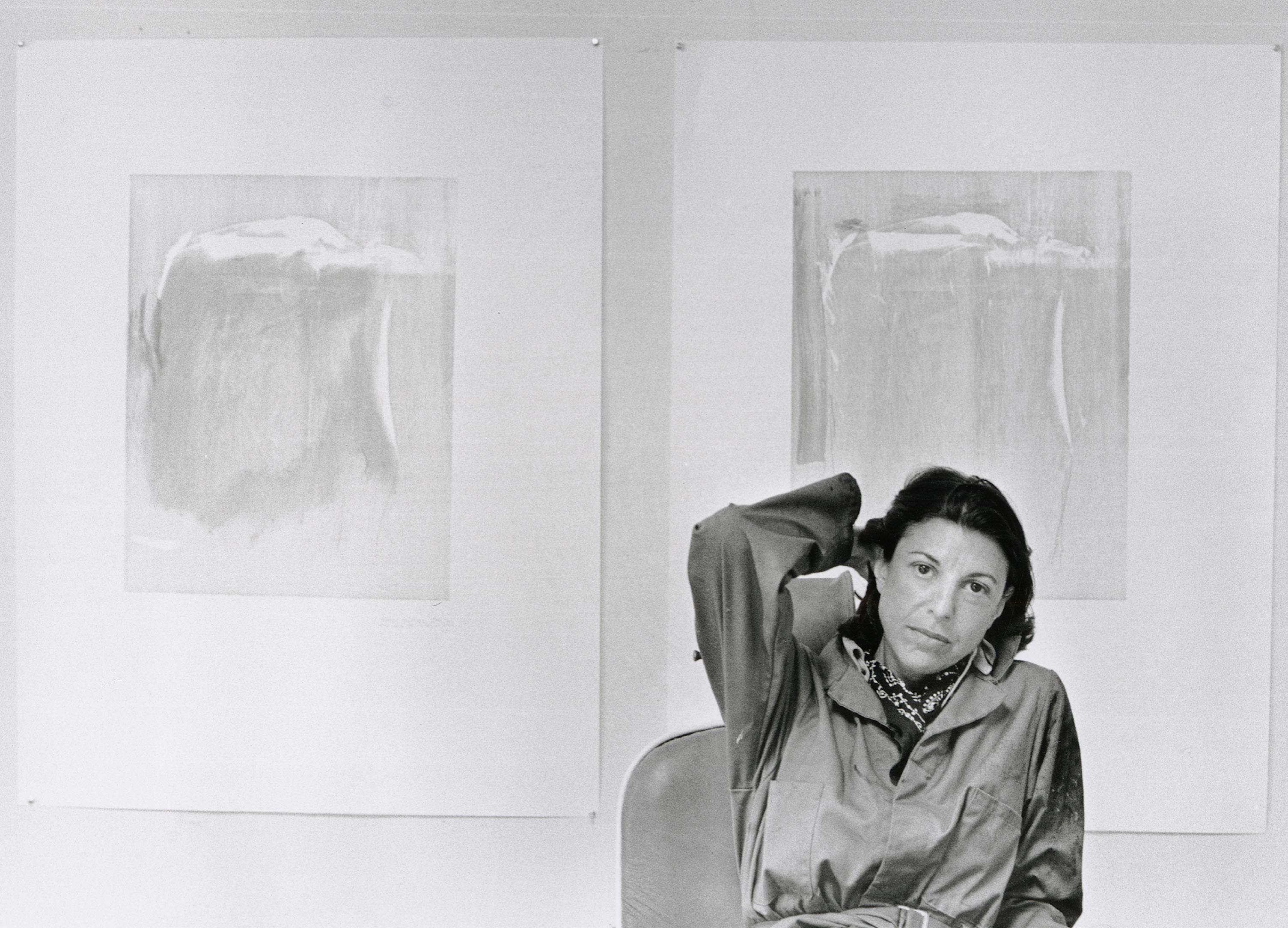 Helen Frankenthaler in her studio, 1977
Helen Frankenthaler in her studio, 1977
Jasper Johns
Corpse and Mirror, 1976
Screenprint
Sheet size: 42 7/8 x 52 7/8 inches
Printer and Publsiher: Jasper Johns and Simca Print Artist, Inc., New York
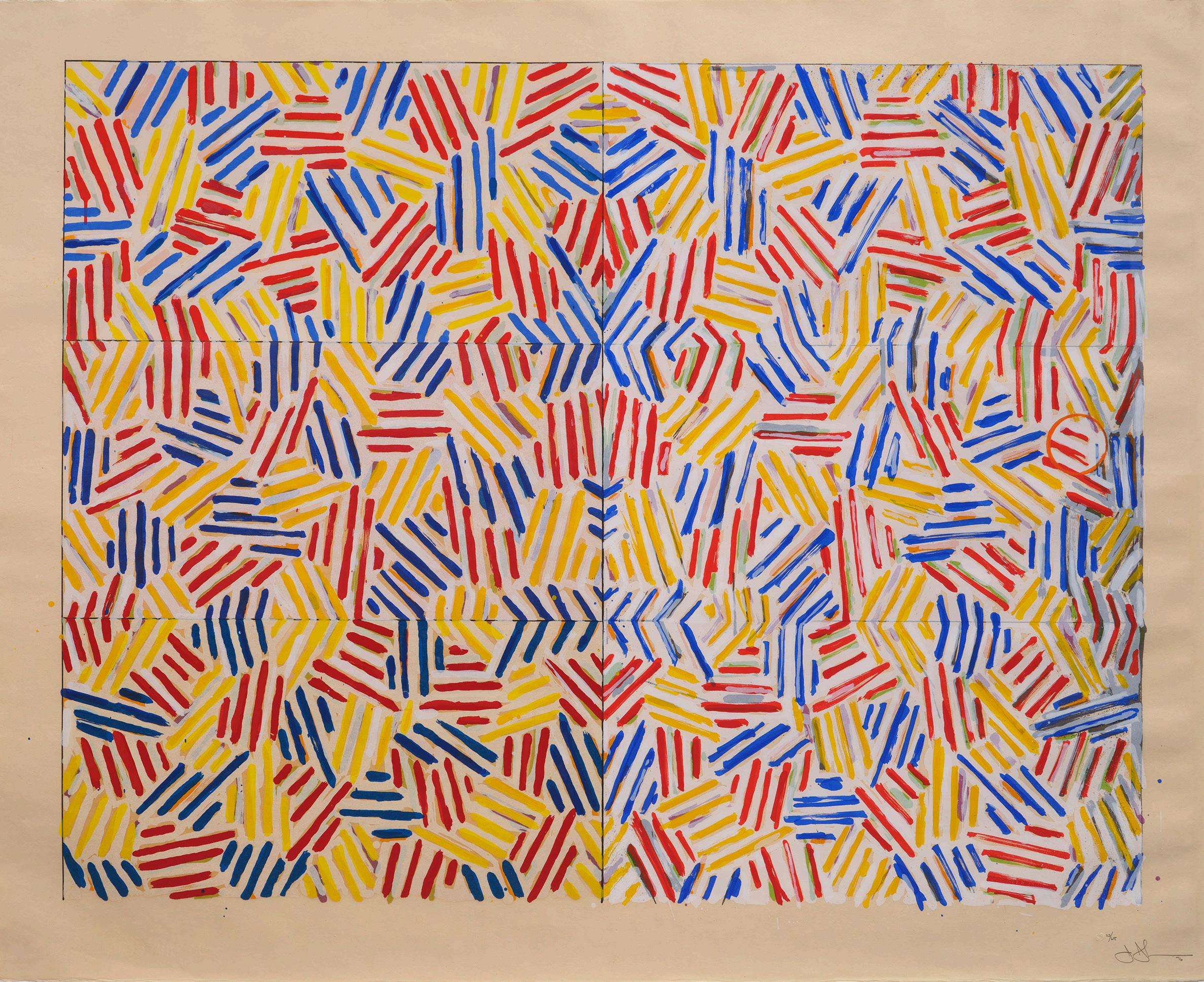
Edition: 65, plus proofs
Catalogue Raisonné: ULAE 169
Signed, numbered, and dated
Printer
Catalogue
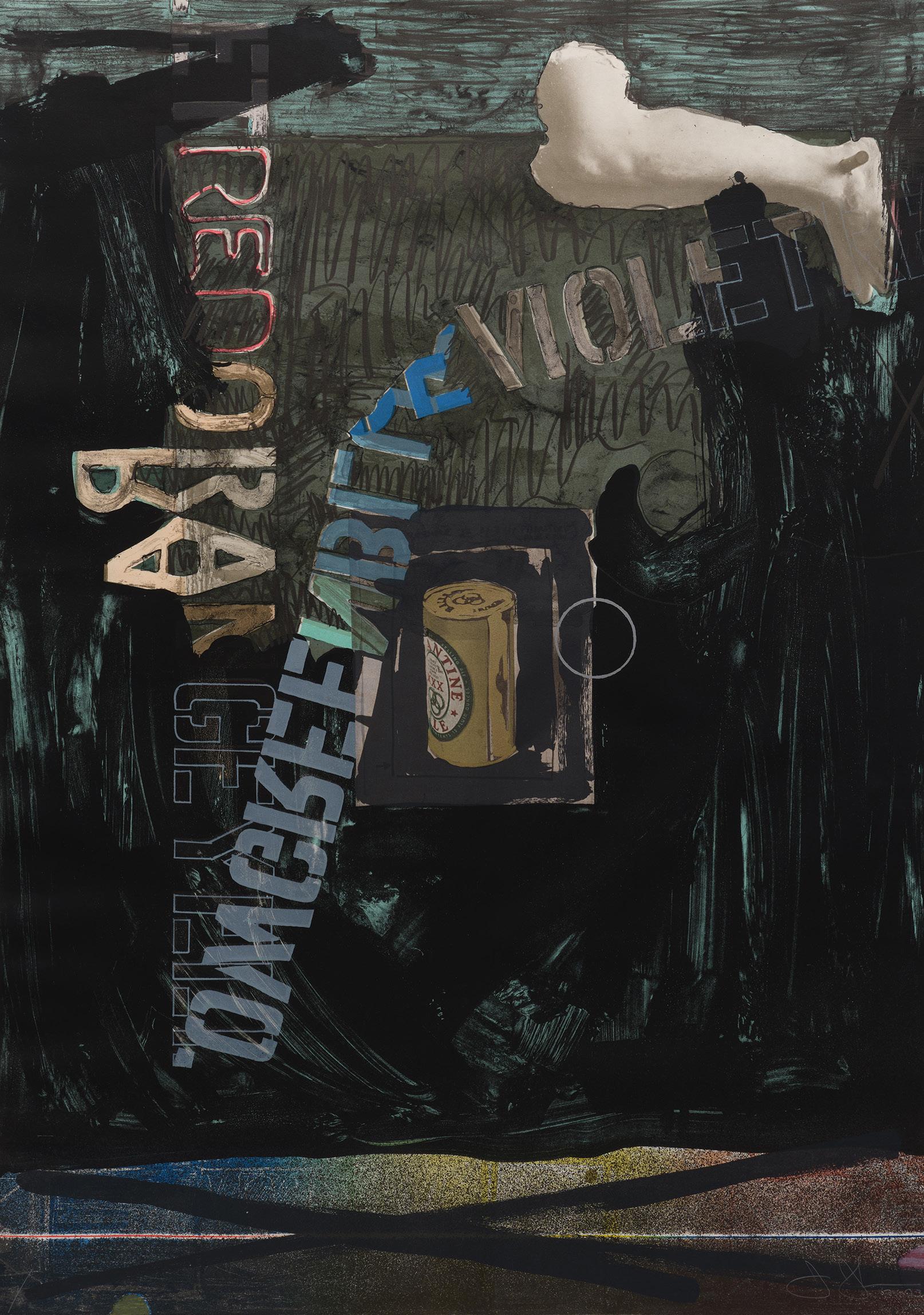
Ellsworth Kelly
Colored Paper Image IX (Four Grays with Black I), 1976
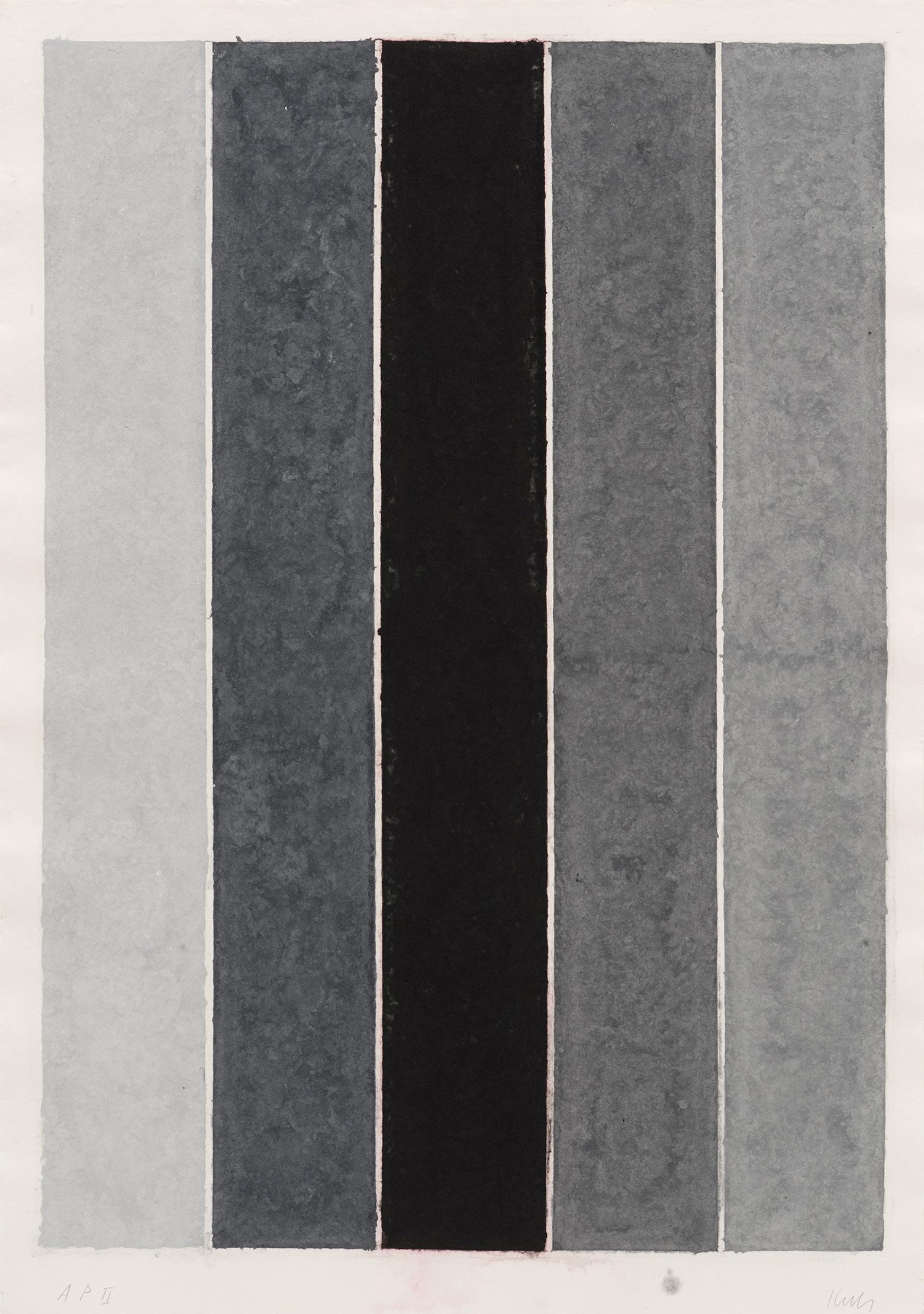
Colored and pressed paper pulp
Sheet size: 46 1/2 x 32 1/2 inches
Printer: Ellsworth Kelly and Kenneth Tyler, fabricated at HMP Paper Mill, Woodstock, Connecticut
Publisher: Tyler Graphics Ltd., Bedford New York
Edition: 18, plus proofs
Catalogue Raisonné: Axsom 149
Signed and numbered
Ellsworth Kelly

18 Colors (Cincinnati), 1979-82
Lithograph Sheet size: 16 x 90 1/2
Printer and Publisher: Gemini G.E.L., Los Angeles
Edition: 57, plus proofs
Catalogue Raisonné: Axsom 193
Signed and numbered
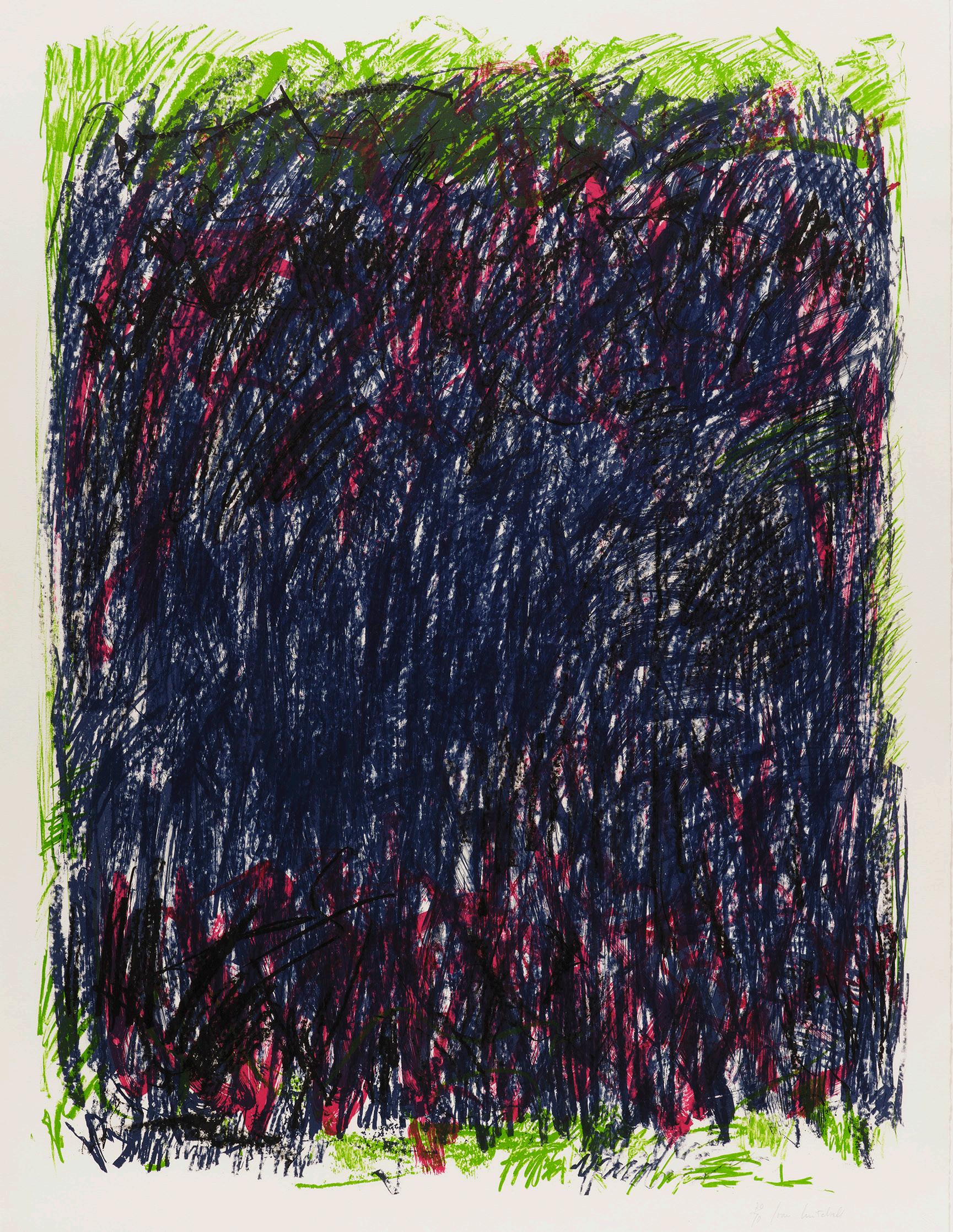
Joan Mitchell Sunflower V, 1972
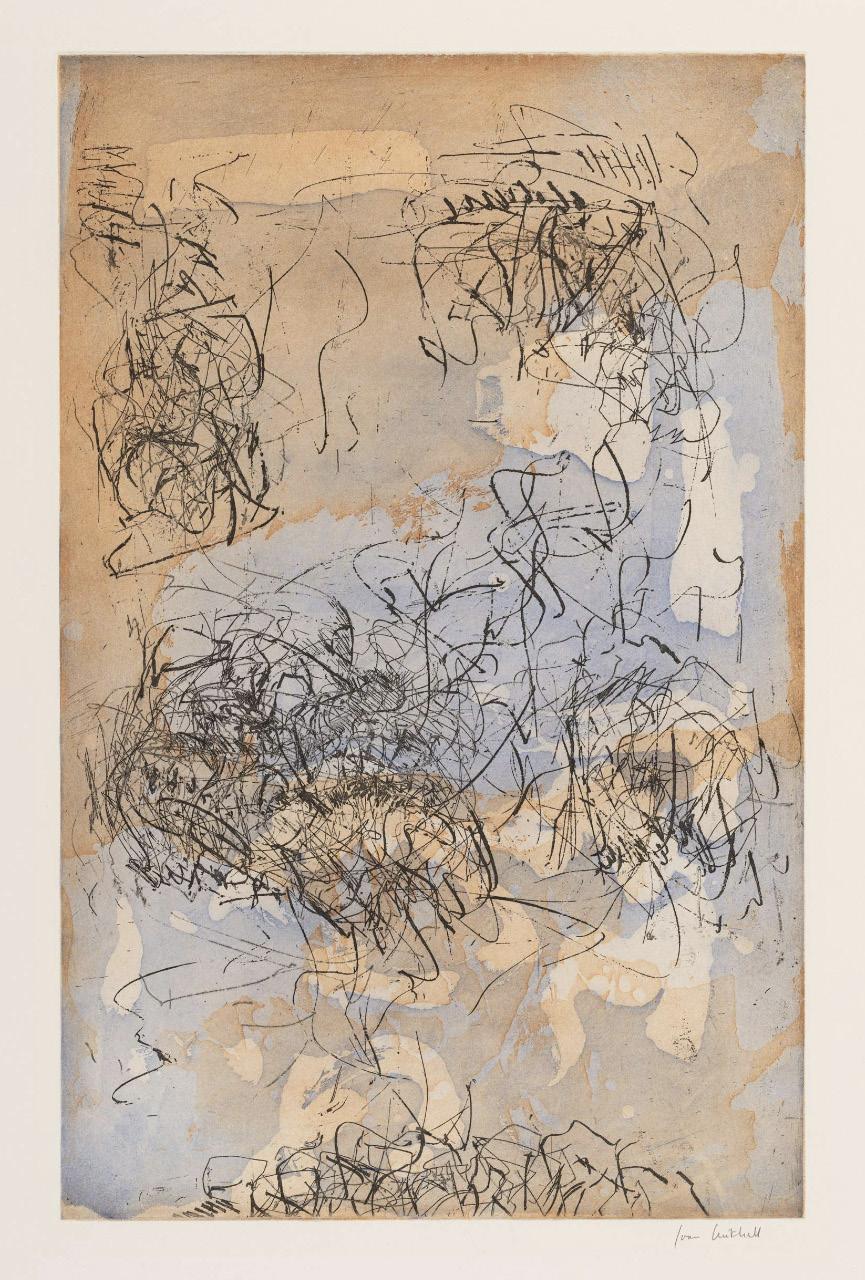
Etching with aquatint
Sheet size: 35 7/8 x 24 7/8 inches
Printer: Arte Adrien Maeght, Paris
Publisher: Maeght Editeur, Paris
Edition: 75, plus proofs
Signed and numbered
Ed Ruscha Indecision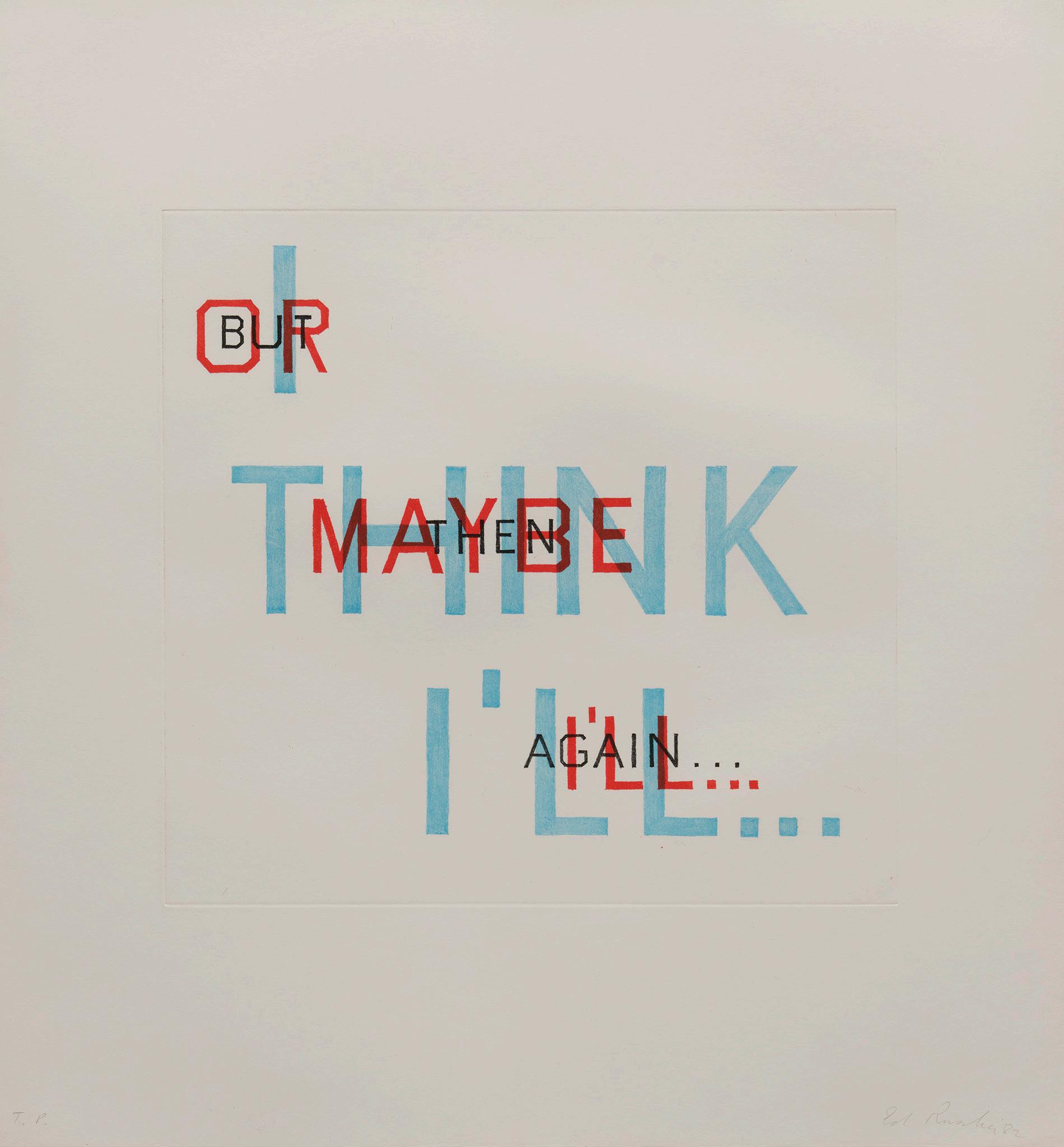
Etching
Printer and Publisher:
Catalogue Raisonné: Engberg 128
Signed, dated, and
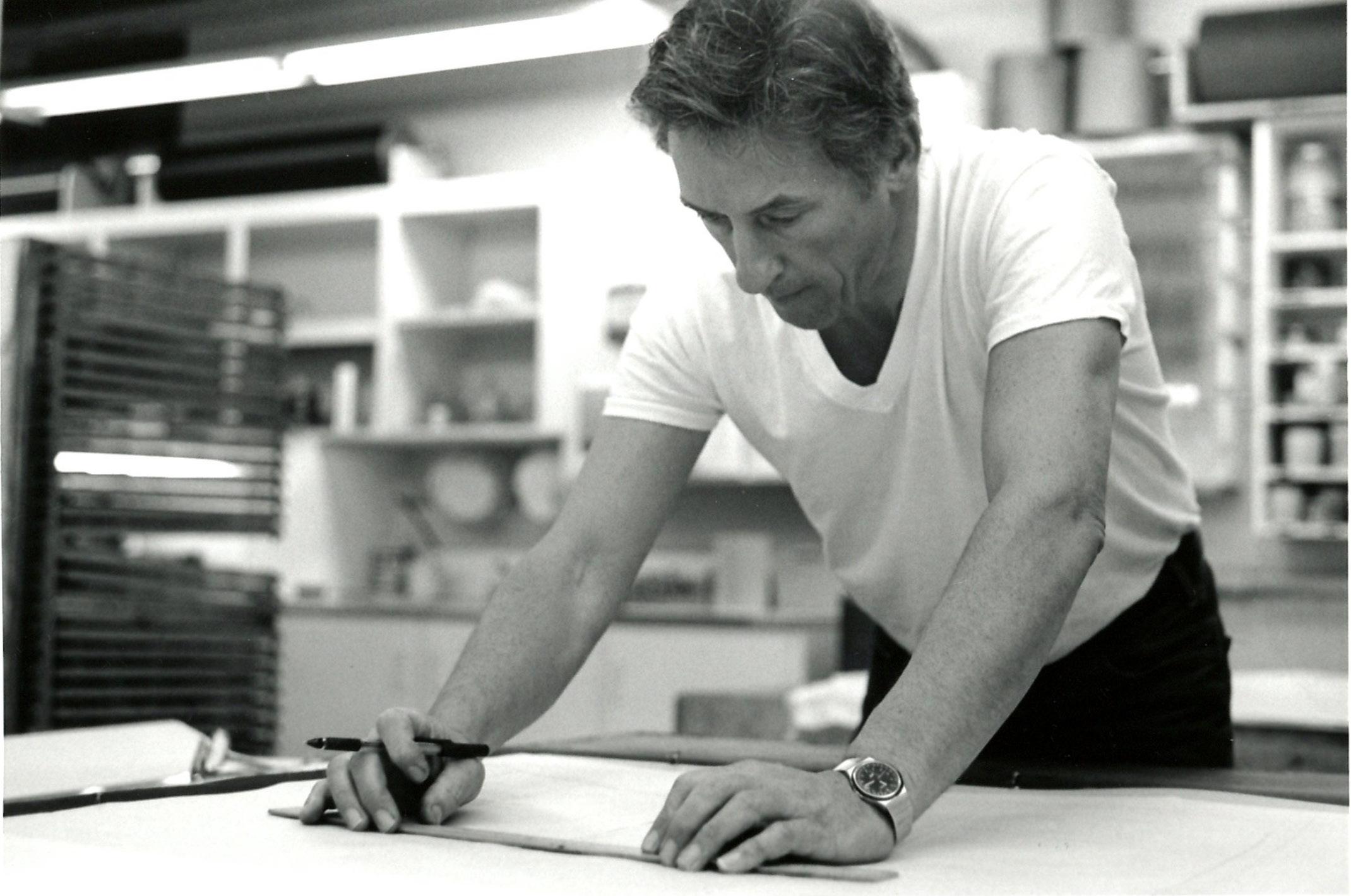 Ed Ruscha at Tamarind Lithography Workshop, Los Angeles 1991
Ed Ruscha at Tamarind Lithography Workshop, Los Angeles 1991
Bruce Nauman
Shit and Die, 1985
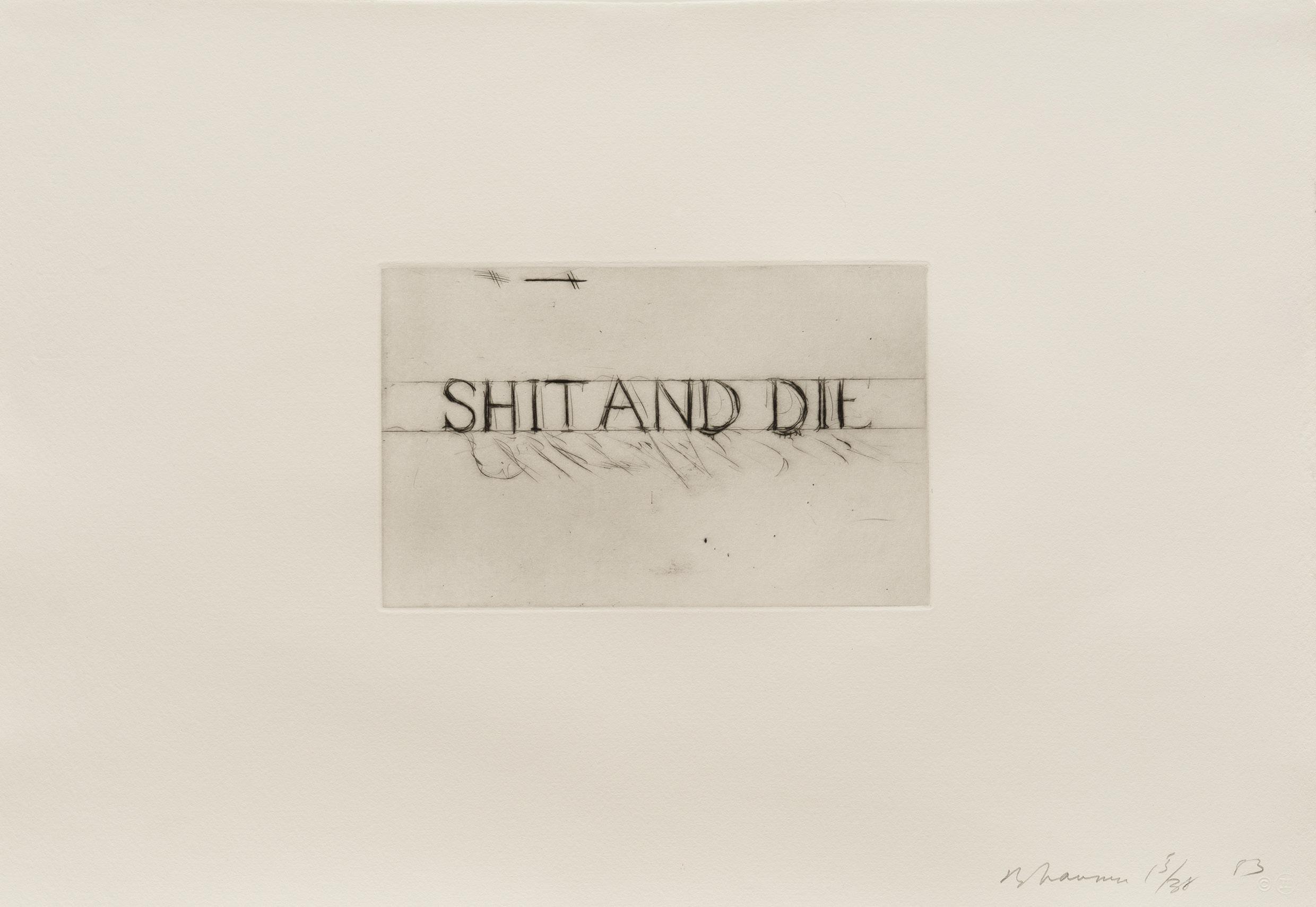
Drypoint Sheet size: 15 3/4 x 22 1/2 inches
Printer and Publisher: Gemini G.E.L., Los Angeles
Edition size: 38, plus proofs
Catalogue Raisonné: Engberg 128
Signed, dated, and numbered
Lichtenstein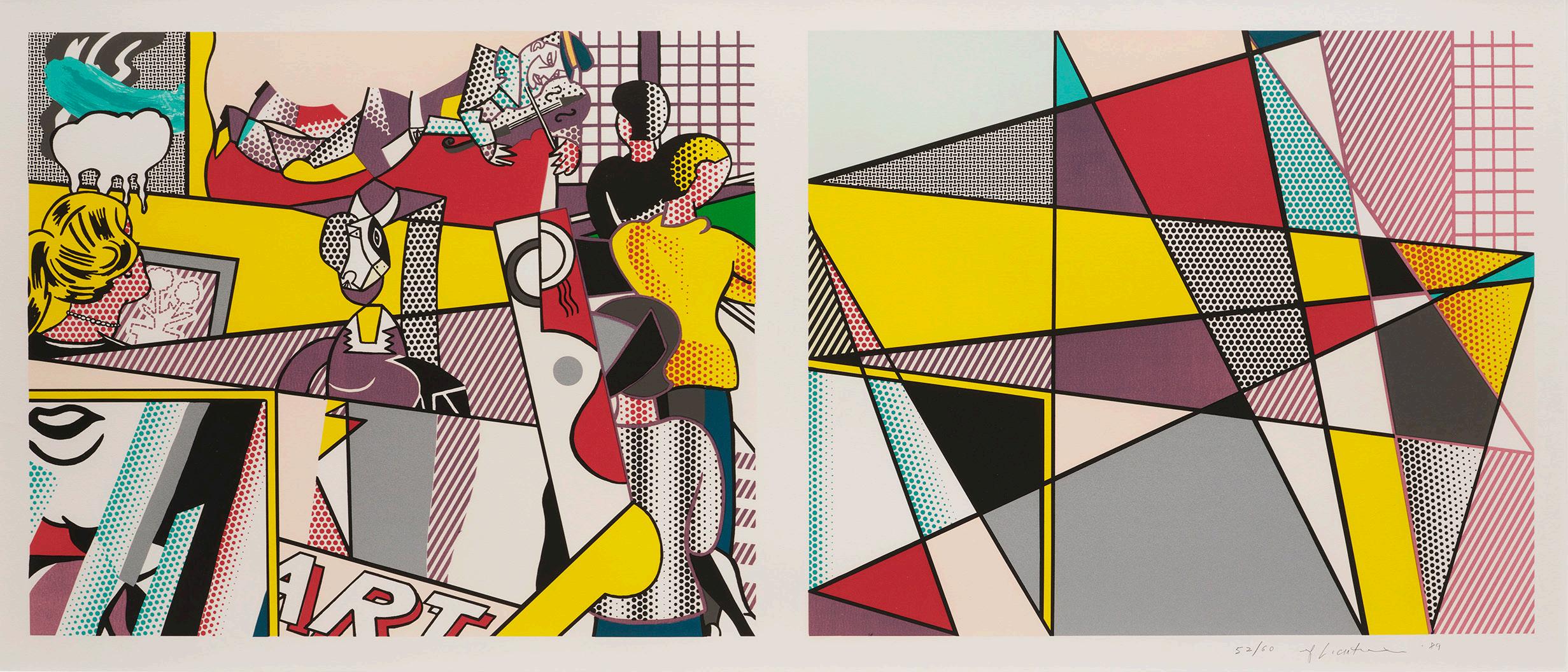
Printer
Catalogue
Roy Lichtenstein
Landscape with Poet, 1996
Lithograph with screenprint

Sheet size: 90 1/4 x 36 inches
Printer and Publisher: Gemini G.E.L., Los Angeles
Edition size: 60, plus proofs
Catalogue Raisonné: Corlett 238
Signed, dated, and numbered
Roy Lichtenstein
Two Paintings, 1984
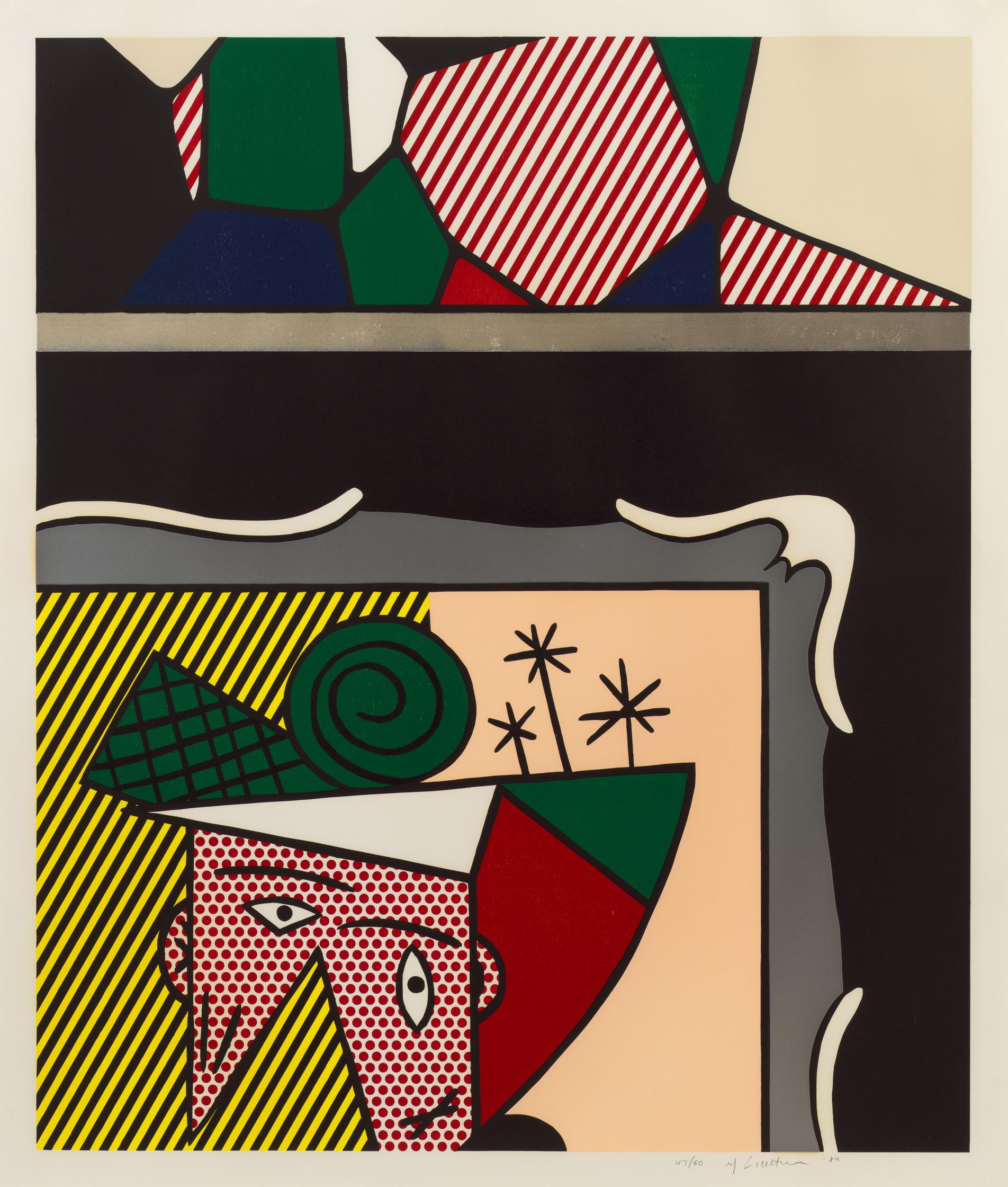
Woodcut, lithograph, screenprint, and collage
Sheet size: 45 1/2 x 39
Printer and Publisher: Gemini G.E.L., Los Angeles
Edition: 60, plus proofs
Catalogue Raisonné: Corlett 205
Signed, dated, and numbered
Richard Diebenkorn
Large Bright Blue, 1980

Aquatint and etching
Sheet size: 39 5/8 x 26 1/8
Printer and Publisher: Crown Point Press, San Francisco
Edition: 35, plus proofs
Signed, dated, and numbered
Richard Diebenkorn (1922 –1993) created some 200 prints over the course of his career, beginning in the 1940s. Despite being well-known for his use of color as a painter, it was not until 1980 that Diebenkorn began regularly incorporating color into his prints. Large Bright Blue is one of the eight works he produced that year in his first series of color etchings at Crown Point Press in San Francis co. Diebenkorn began collaborating with Crown Point Press founder Kathan Brown in the 1960s and typically worked in the intaglio medium. The eight prints created in March and April of 1980 mark a turning point in Diebenkorn’s career and he continued to make color intaglio prints at Crown Point until his death in 1993.
At first glance, Large Bright Blue looks as though it could be part of the artist’s famed Ocean Park painting series, which he started in 1966. Large Bright Blue undeniably grapples with the same subject: the artist’s surroundings in coastal California and specifically the Pacific Ocean. According to Brown, Diebenkorn used printmaking as “a way of drawing” to test ideas he was exploring in his paintings.
Owing to that sense of exploration, many of Diebenkorn’s prints, especially from 1980, relate direct ly to one another. For example, Large Bright Blue features an irregular rectangular form that appears in other prints from this important period, such as Construct (Grid) and Small Red. Diebenkorn often reused his plates, layering them or interchanging colors to produce new images. As a result of this approach, Large Bright Blue exemplifies Diebenkorn’s creative process as he discovered what would become a favored method of printmaking.
 Richard Diebenkorn at Crown Point Press, 1980
Richard Diebenkorn at Crown Point Press, 1980
Richard Diebenkorn
Blue with Red, 1987
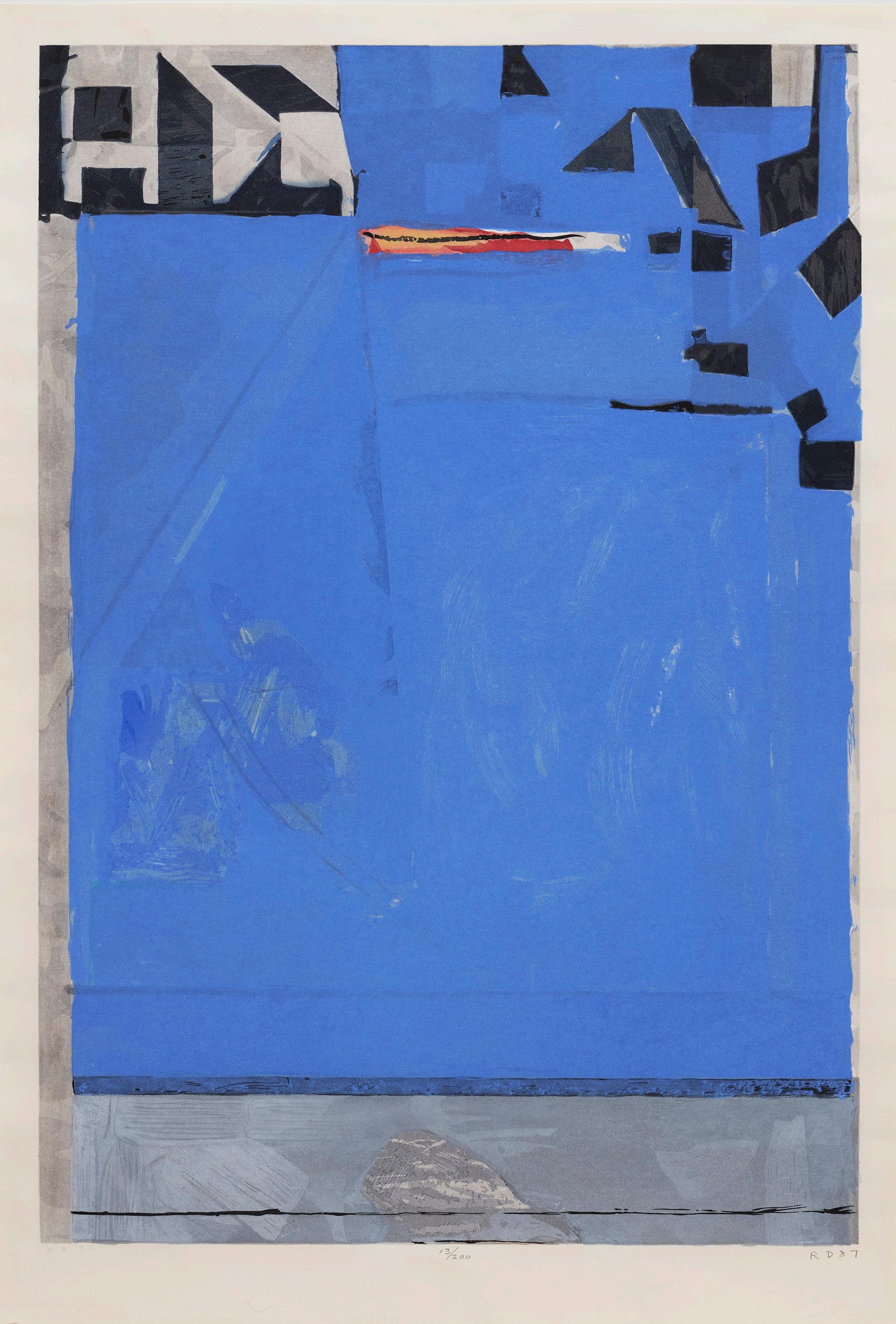
Woodcut
Sheet size: 37 1/2 x 25 1/2 inches
Printer: Tadashi Toda at Shi-un-do Print Shop, Kyoto, Japan
Publisher: Crown Point Press, San Francisco
Edition: 200, plus proofs
Initialed, dated, and numbered
Donald Judd
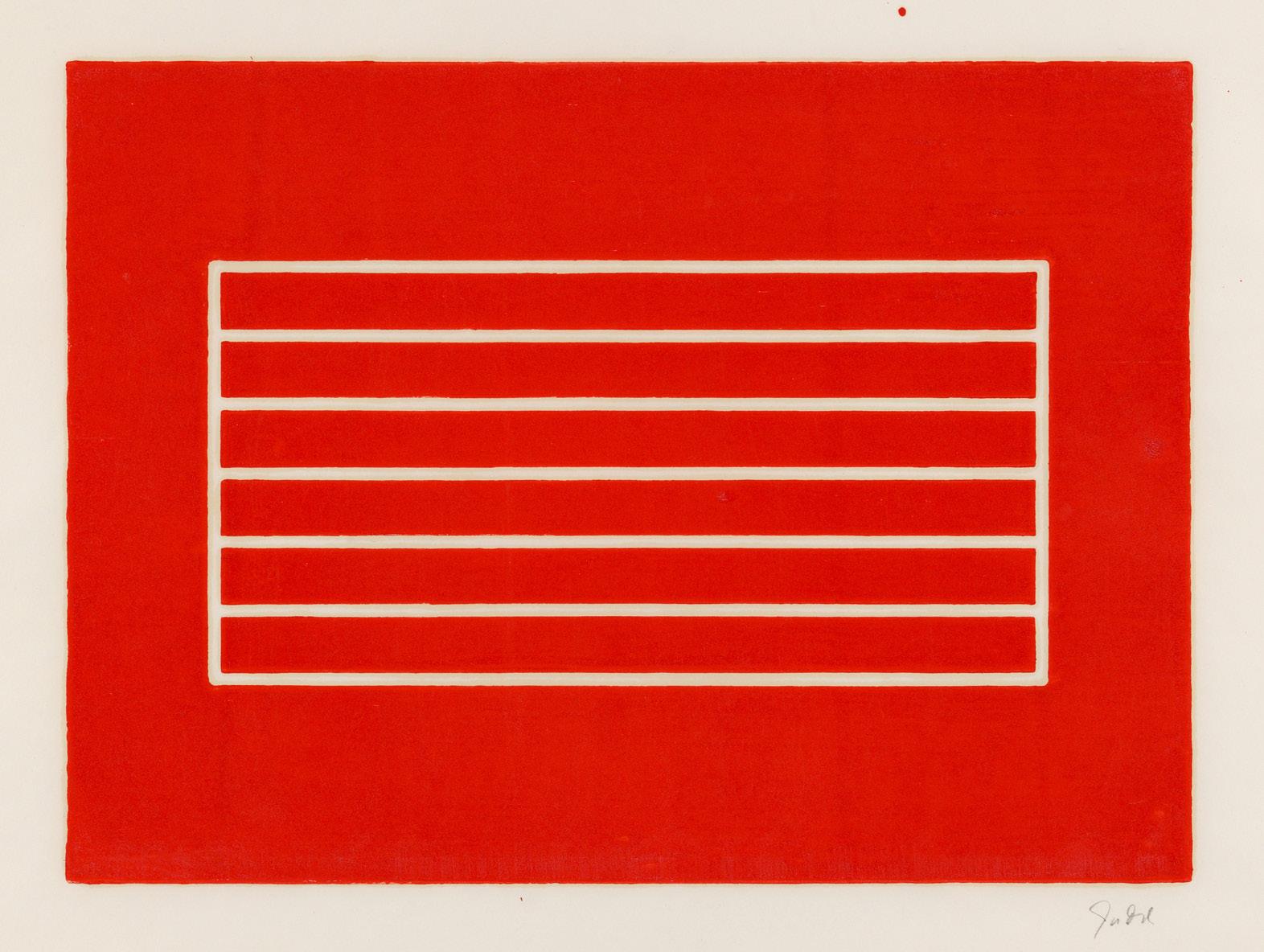
Untitled, 1961-79
Woodcut
Sheet size: 21 x 29 1/4 inches
Printer: Roy C. Judd
Publisher: Edition der Galerie Heiner Friedrich, Munich
Edition: 25, plus proofs
Catalogue Raisonné: Schellmann 31
Signed, dated, and numbered
SUSAN SHEEHAN GALLERY 136 East 16th Street New York, NY 10003 Tel: +1-212 489-3331 info@susansheehangallery.com www.susansheehangallery.com

